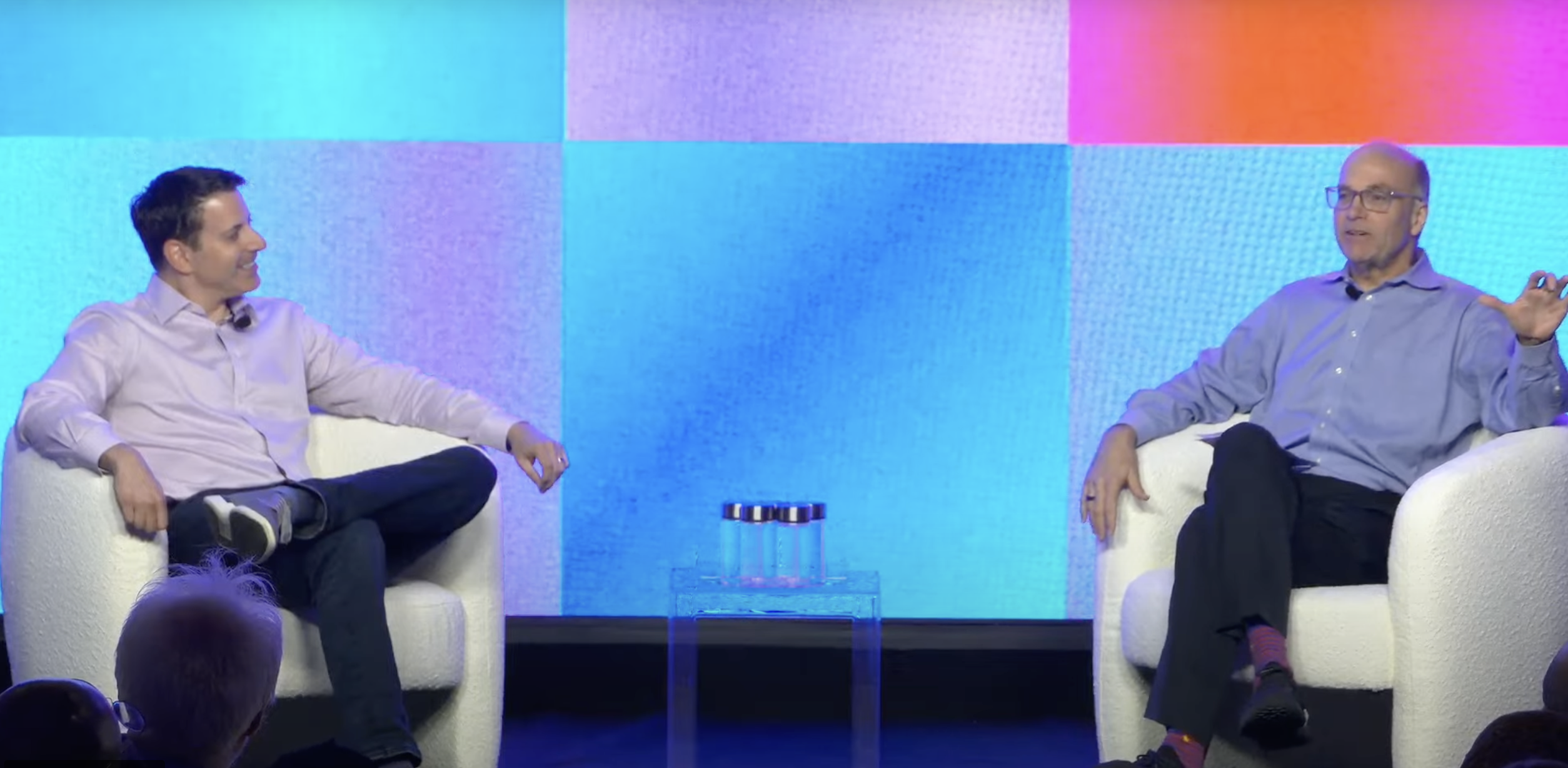AI's place in the world, media, and professional communications

The fascinating — and sometimes unnerving — thing about AI, is we don’t yet know where it will end up. Axios Co-founder Mike Allen and Axios HQ CEO Roy Schwartz dug into three levels of thinking about AI at Axios’ AI+ Summit in New York:
- AI in the world
- How we're thinking about it in media
- How we're thinking about it in communications
In the world: “It's that we want to know what's real,” Roy said. “What's going to lead to true productivity? There are billions of dollars being spent. How is that going to translate into what we do in our work lives, what we do in our personal lives?”
Axios: AI’s place in media
Even in the earliest days of Axios Media, and for years since, Mike, Roy, and Co-founder Jim VandeHei obsessed over how is generative AI going to affect what we do, and they could use it to get smart professionals smarter, faster on the topics that matter.
The way they looked at it, in Mike’s words:
- “We're leaning into being innovative and experimenting.”
- “In our newsroom, it's always humans first, journalist first, which is part of how we build trust with our audience, and so we're using the tools to help our journalists do more on more topics for more people.”
One of their key use cases: “City data,” Roy says. “We have 30 different cities that we now cover on the ground locally — and we grab that dataset, and we're able to quickly generate drafts of content using that data in order to help the journalists get a head start.”
Media takes a trust-but-verify approach. “Something Jim VandeHei, our CEO, has said is that in these times, there will be even more of a premium on people like Ina Fried who can tell you things you don't know,” Mike says. “That's always going to be the gold standard.”
Axios HQ: AI’s place in executive communication
At Axios HQ, Roy’ is“spending his days talking to some of the most interesting people in the world — corporate leaders, experts — about generative AI,” Mike says. “What are you hearing in those conversations about how people are actually using AI?"
There are two things standing out among executives, in terms of how they're actually utilizing AI right now. In Roy’s words, they’re using it…
- “As a knowledge base, so searching through emails, documents, spreadsheets. Being able to extract information to understand, ‘Where can I find this answer to this question amongst all the corporate documents?’ That’s real, happening right now.”
- “To augment writing. I see a lot of tools that are helping people write more. That unfortunately means a lot more emails, text messages coming your way in the next few years, but that's also our focus at Axios HQ — how do we make everyone better writers, better communicators, and make everything more efficient at work?”
What’s next: There are three quick ideas Mike and Roy believe will be critical to serving any audience, anywhere, better — especially in the age of AI.
- Trust. Deliver clear information, without bias. “We will never waste your time, never insult your intelligence,” Mike says.
- Expertise. Human expertise has been part of the design of Axios and Axios HQ from day one. Now, in a world of AI, “we want to make sure it's not just the AI,” Roy adds. “We're also using best practices and human expertise — actually using former journalists and people like a former writer of the presidential daily briefing — to help the recommendations for AI.”
- Human connection. That “has never been more important,” Mike says. Whether it’s with an expert talking to a journalist or an executive communicating to staff.
The bottom line: The job of a communicator is getting more important and more complex every year. AI is here to stay. With the right strategy, it turn down the dial on how intense the experience and workload of being a communicator will be.
Watch the full Axios AI+ Summit:





.webp)












.webp)

















